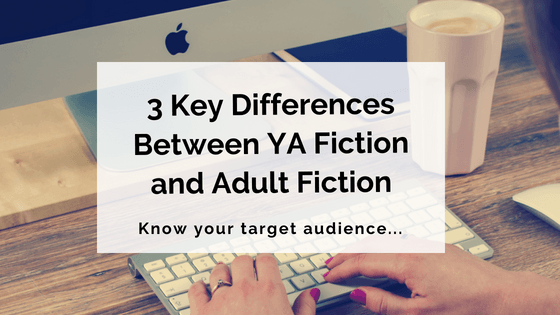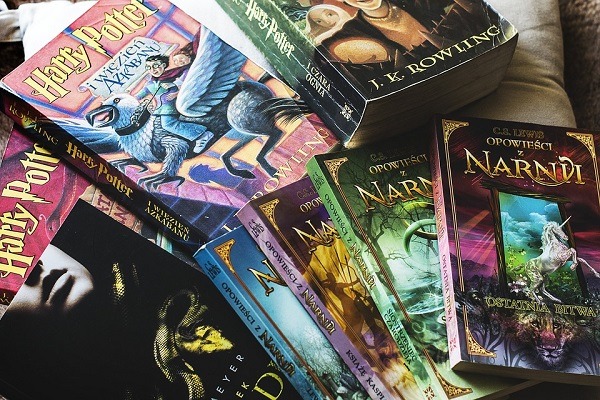We’ve talked plenty about young adult fiction here on Writer’s Edit.
We’ve covered how to master conflict and what mistakes to avoid when writing for young adults; put together an ultimate guide to the category; and shared our top five tips for writing YA fiction.
Not to mention the fact that our own Founding Editor, Helen Scheuerer, is a bestselling YA fantasy author!
However, we’ve never really delved into the question of what truly separates ‘young adult’ fiction from ‘adult’ fiction.

These days, you might be forgiven for thinking that ‘young adult’ and ‘adult’ are just labels applied to books by publishers in order to market and sell them more easily. And to an extent, you’d be right.
However, the division between young adult and adult fiction exists for a reason. It’s there to define the target audience – the readers for whom the author has primarily written the book.
That’s not to say there isn’t crossover between the two categories.
Young adults can still read adult fiction, of course, and adults can (and do!) read YA.
But the categories – and the differences between them – come into play when you consider who the book is intended for, not necessarily who’s actually reading it.
So today we’re here to ask: what are those key differences between young adult fiction and adult fiction?
Let’s dive in!
1. The age of the protagonist/s
Without a doubt, the primary difference between young adult and adult fiction is the age of the main characters.
For a book to fall firmly into the ‘young adult’ category, it must have at least one teenage protagonist, usually aged in the upper teens – between 15 and 19 years old. (Protagonists that fall towards the lower end of the teens tend to be more common in middle-grade fiction – a different category entirely.)
Adult fiction, on the other hand, can have main characters of any age, but generally tends to favour protagonists aged 20 and above.

Let’s take a look at two examples from the thriller genre: the hugely popular adult thriller The Girl on the Train by Paula Hawkins, and an Australian YA thriller, Small Spaces by Sarah Epstein.
These two books can be seen as quite similar in their subject material: both include key traits of the thriller genre, and both feature a female protagonist who is a potentially unreliable narrator.
However, the books are clearly separated into different categories by the age of their protagonists. Small Spaces centres around a 17-year-old girl, and despite its title, The Girl on the Train‘s main character is a fully grown woman (32 years old).
But in these books and all others categorised as either YA or adult fiction, it’s not the age of the main characters alone that defines the category. It’s also the concerns and priorities of those characters, and the way their stories are told.
That’s where our next two key differences come in.

2. The voice
Another key distinction between young adult and adult fiction is found in the voice.
Bearing in mind that YA fiction will almost always be authored by adults, well-written YA stories nonetheless have an authentic voice that rings true to the young adult experience.
This voice establishes itself in a few ways: primarily through the concerns, motivations and inner thoughts of the protagonist/s, and through the style in which the story is written or told.
A teenager has different priorities, worries and thoughts than an adult, and this comes across in YA fiction.
This goes some way towards explaining the prominence of certain tropes (e.g. love triangles) and the prevalence of certain themes (e.g. self-discovery and friendship) in YA. These are all typically young adult experiences, things teenagers tend to focus on more than adults. YA and adult fiction explore different sets of concerns, neither one of which is more or less important than the other.

A book’s style, which goes hand-in-hand with its voice, also goes some way towards its categorisation.
In YA fiction, for example, a sense of immediacy and ‘in-the-moment’ storytelling is favoured, often delivered through close third person/first person point of view and/or present tense prose.
Adult fiction is more likely to be told in the style of a reflection on the past, mostly using third person narration, sometimes presenting an omniscient perspective. Reflective, more ‘lyrical’ prose is often favoured over the more action/plot-focused style of many YA books.
Let’s consider two examples, both hugely popular fantasy series, one classified as YA fiction and the other as adult: J.K. Rowling’s Harry Potter series and Patrick Rothfuss’ The Kingkiller Chronicle.
Each series has a single main protagonist and a story that spans multiple years of that protagonist’s life, but there are key differences between the two that mark out their categories. Perhaps the key defining difference between the two is the voice and the way the story is told.

Throughout the Harry Potter series (which, admittedly, does begin more in the realm of middle-grade, but moves firmly into the young adult category as the series progresses), we experience events directly alongside Harry in the present.
As well as joining him in the ongoing battle against Voldemort, we are privy to his quintessential young adult experiences: friendship, first love, family, identity and self-discovery. We are inside his head, experiencing the story through the eyes and voice of a child as he grows into a young adult.
Throughout The Kingkiller Chronicle, however, we are told the story of the protagonist Kvothe’s past through a series of reflections from his adult self.
While the bulk of the series, in which Kvothe is telling his own story, is in first person and explores his younger years – usually trappings of YA fiction – the reflection and voice of present-day, adult Kvothe is absolutely central to the story, and this, combined with a few other factors, classes it as adult fiction.

3. The themes of the story
Our final key difference between YA and adult fiction is found in the themes of the story, and how they are explored.
This can be a tricky one. Many people have made the mistake of assuming the themes explored in young adult fiction are more trivial than those of adult fiction, or that themes explored in adult fiction are off-limits in YA. This simply isn’t true.
Some themes are definitely more specific to one category or the other – coming of age in YA, for example, or existential musings in adult fiction. But themes cross over all the time between the two categories. The differentiation comes from the way themes are explored.
Take love and romantic relationships, for example. This theme and everything that comes with it, including sexuality, is as much a part of the young adult experience as it is the adult.
But while characters might have sexual experiences in YA novels, it’s more likely to be explored in much less explicit detail than a sex scene in an adult novel. (In regards to the ‘new adult’ genre, on the other hand, we can’t quite say the same thing… More on that below!)

Violence, and the degree of graphic detail in which it’s portrayed, is another example of a theme that can draw a line between YA and adult books. Violence is by no means off-limits in YA, but it’s safe to say that a book with extremely graphic violence is probably intended for adults rather than a younger audience.
As you can see with this and the other two differences we’ve identified, there are often instances where lines blur and the YA/adult categories become difficult to define. But in most cases, a combination of the above three elements is enough to place a book primarily in front of one audience or the other.
A note on the ‘New Adult’ category
You might have seen books differentiated from YA fiction by the category ‘New Adult’ or ‘NA’. So what does this further category mean, and how does it differ from YA and adult?
New adult fiction can be seen as something of a crossover category at the midpoint between YA and adult. This is mirrored by its characters. As the name suggests, they’re literally ‘new’ to being adults: aged in their early twenties, somewhere between a young adult and a ‘real’ adult.
In many ways, this ‘in-between’ category combines many trappings of both young adult and adult fiction into a hybrid aimed at an audience that falls in the middle of the two.

***
Which category of books do you prefer to read? Young adult, new adult or adult fiction?
Let us know in the comments!
4 responses to “3 Key Differences Between YA Fiction and Adult Fiction”
Thank you for posting this guide. As someone who writes Adult but is interested in jumping into YA, I’ve always struggled where the boundary between the two groups lies, and how to differentiate. There’s a lot of adult books with teenage characters out there and it is very confusing sometimes to tell the difference. I feel like a lot of modern YA novels like The Hunger Games also strays into the adult categories based on your guidelines. I’ve got some research to do.
I avoid New Adult like the plague, mainly because it tends to be Romance with graphic sex that 50 years ago would have been rated XXX.
This was really interesting as I’m now writing my fourth novel and the two writers that I meet to discuss our progress commented that I was now writing YA fiction. I don’t write by genre, simply launch into a theme that interests me. Although I was obviously aware of YA fiction, and the wide age range that reads it, I disn’t have a good definition by which to analyse my own writing – and this novel definitely is YA. Thank you for such a thorough article.
Hi Bruce
Lovely to hear that you’ve gone down the route of writing YA fiction, even if it was by accident!
YA Fantasy in particular is so fun to write, because the only boundaries are the extent of your own imagination.
One other thing I wanted to touch on from your comment was the fact that you meet with other writers on a regular basis to discuss your progress. This is such a fantastic way to hold yourself accountable and to ensure that you are consistently and relentlessly working towards your goal of finishing your novel. Well done.
Definitely something that all novelists should be doing if they aren’t already.
Cheers Bruce!
Dave.